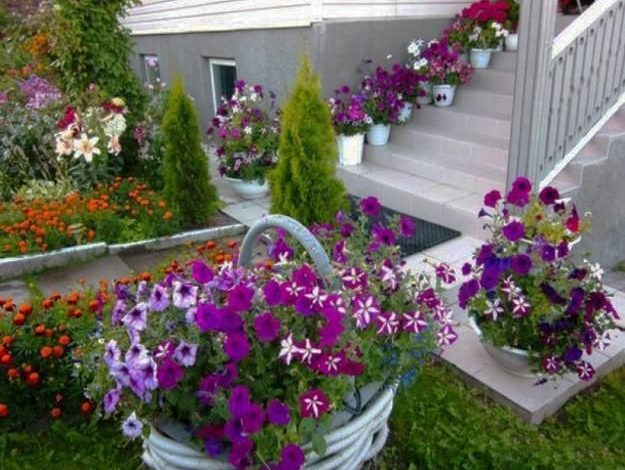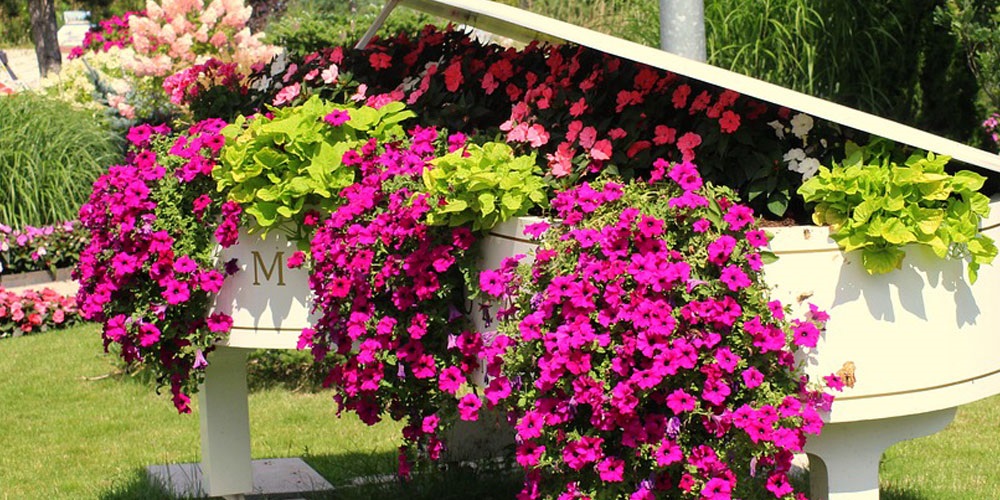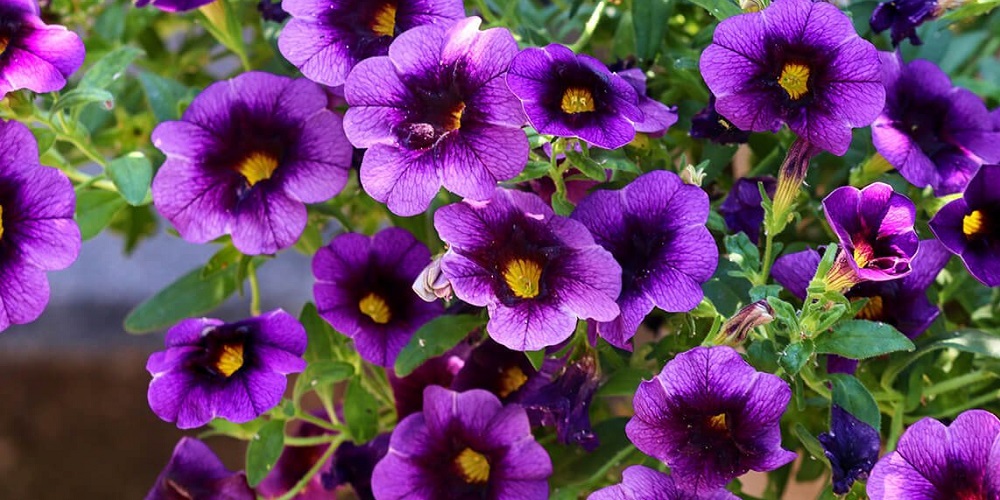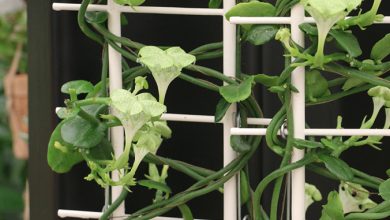How to decorate your garden with petunias?

Petunias are one of the most appreciated species by growers, gardeners and landscapers, as they offer beautiful coloration for a long time and are easy to maintain. Thanks to their adaptability, they can be sown directly in the ground or in pots; so they are recommended for decorating gardens, windows and terraces.
The petunia that we know today, the petunia hybrida, is a species that comes from the petunia nyctaginiflora; a plant native to Brazil and imported to Europe by a French expedition. Although it originally only produced white petunias; currently petunia flowers are present in an extensive chromatic variety.
General aspects of this ornamental species
Petunias are ornamental plants that encompass 23 species. They are native to South America and grow forming uniform branches full of color. They are not very tall annual plants, since their height does not exceed 60 cm.
Likewise, they have evergreen foliage; that is to say, they remain always green even during autumn, which fills external spaces with life regardless of the season. Its leaves have entire edges and can be rounded or elongated; In addition, they develop in the stem opting for two forms: alternate and opposite.
Regarding its flowers, these are its main attraction. Petunias grow solitary at the tips of their branches, they have a tubular calyx and their carola is similar to a trumpet. They are plants that provide abundant flowering, which lasts from spring to autumn.
During the time that the plant is in bloom, it offers a spectacular color palette that adorns gardens and other green spaces. In addition, some varieties have the peculiarity of generating an exquisite fragrance.

Decorating spaces with petunias
In addition to geraniums, petunias are the most widely used flowers in Spain to decorate home gardens, parks, avenues and public squares. Thanks to their striking flowers that they offer in a wide variety of colors, petunias are highly appreciated species by all.
The colors offered by the petunia can please the most select and refined tastes, ranging from the purest and softest to the strongest and most intense tones. Therefore, we can see pink, white, yellow, orange, red petunias and even in a striking blue color.
In the same way, there are hybrids of vibrant colors with shades that combine cream with cappuccino, white backgrounds with violet or garnet veins; we also have petunias in very dark shades with outrageous yellow and yellow streaks with orange centers.
These are plants that adapt perfectly to hanging baskets, so many homes may have a hanging petunia that decorates with its beauty; especially in cases where there is not much green space available. Likewise, they can live in pots and be placed inside the home; taking care of providing them with light and water.
In addition, these species can provide a chromatic show when flowers of different colors are grown in window boxes on balconies, terraces and even provide great beauty to decorate window sills and garden borders.
A low maintenance plant
How to care for petunias is an easy question to answer, since this plant is characterized by its low maintenance; their care is not many and if they are maintained periodically, we can have beautiful flowers to fill the environments with color.
It is a species that easily adapts to different spaces and only requires a few minutes a day. For their development and growth they need a good substrate, a daily dose of sun and water. Likewise, in order for them to flourish abundantly, they require organic fertilizer.
Although they are plants that have a fragile appearance, the truth is that it is a sun -resistant species that blooms almost every season; however, petunias do not thrive in winter, as they cannot withstand frost.
Likewise, when planting petunias in a pot it is important to give them an extra soluble fertilizer, which could be incorporated in the watering cans; in such a way that the plant receives water and nutrients at the same time.
Another of the petunias care that should be paid attention to is to regularly remove all dry or withered flowers and leaves. This task should be carried out mainly in those environments where it rains frequently, since rain is a factor that causes the deterioration of open flowers. In addition, by removing the dry parts, the appearance of pest outbreaks is avoided, which favors the petunias to grow healthy.
On the other hand, pruning petunias is something that is not necessary to do frequently, unless you want to conveniently maintain the height of the plant or when very large flowers must be removed.

Cultivation and irrigation
When to plant petunias? Petunia seeds can be planted either in late winter or early spring; the idea is to do it at a time when the frosts or negative temperatures have passed.
If they are going to be sown directly in the ground, this must have a substrate that guarantees the permeability of the watering and if the cultivation is going to be carried out in a pot or hanging basket, these must have enough holes in their base in order to ensure a optimal drainage.
Likewise, the petunia is a plant that requires water frequently. To do this, we can establish a watering routine; either every morning or every afternoon at the end of the day.
In cases where the environment is very hot or dry, it is convenient to water the plant twice a day. If, on the other hand, the petunia is found in rainy environments, it should be checked that the soil is moist so as not to water in these periods; since the roots of the plant could rot due to excess moisture.
Practically, any location is appropriate to grow , show off and decorate our spaces with the beauty of petunias; from large gardens, window boxes on balconies to hanging baskets.

![Photo of Corn Piral (Ostrinia nubilalis): [Characteristics, Detection, Effects and Treatment]](https://www.complete-gardening.com/wp-content/uploads/2021/06/Que-es-el-piral-del-maiz-scaled-1-390x220.jpg)


![Photo of Gardening Care: [Recommendations and Tricks]](https://www.complete-gardening.com/wp-content/uploads/2022/08/gardening-care-recommendations-and-tricks-390x220.jpg)